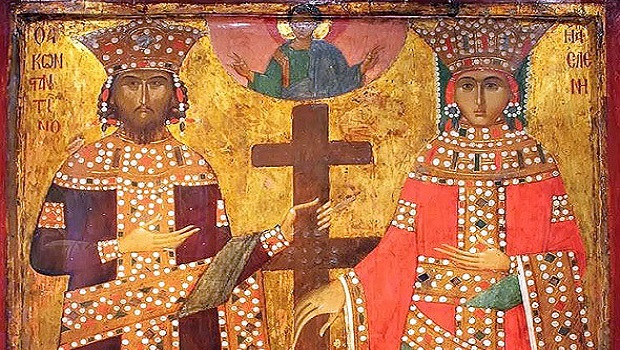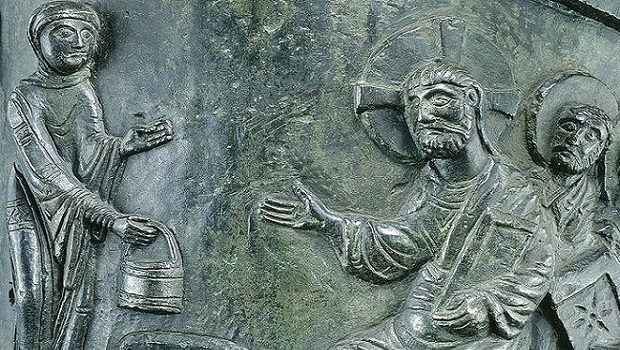Stylites (the Greek word style means pillar)
In the early days of the Byzantine Empire, the love for God made many monks to choose strict and strange types of asceticism. So, some ascetics-saints were standing on a small platform on top of a pillaron for years in an amazing display of endurance and belief in God under any climatic circumstance. They are called stylites. Disciples and followers were climbing up the pillar and supplying them food. Apart from prayers, stylites gave much time to spiritual instructions, to reconciling enemies and often to theological controversies.
The first stylite was probably Simeon Stylites the Elder who had many imitators (called stylites). There are many instances of such ascetics from the 5th to the 10th century. They flourished especially in Syria, Mesopotia, Egypt and Greece.
St. Daniel the Stylite (from Greek stylos, “pillar”) was one of the disciple of St. Symeon the Stylite and followed his example after Symeon reposed.
He was born near the city of Samosata, in upper Mesopotamia. His mother Martha was childless for a long while and his prayers she vowed that if she had a child, she would dedicate it to the Lord. So, he entered a monastery at the age of twelve and lived there until he was thirty-eight. During a voyage he made with his abbot to Antioch, he passed by Tellnesin and received the benediction and encouragement of St. Simeon Stylites. He foretold to the young monk that he would undertake the feat of pillar-dwelling. Then, he visited the holy places, stayed in various convents, and retired in 451 into the ruins of a pagan temple. St. Daniel continued his ascetic life in seclusion. After nine years, he received a vision of Symeon standing on a column above a huge pillar of cloud.
Daniel was born up to Symeon, who greeted Daniel with a holy kiss and declared to him, “Stand firm and play the man.”. Daniel realized that this was a vision of his future and decided to follow Simeon’s lead and take up a stance high above the ground. So he withdrew near the city of Constantinople together with two disciples. They set up a pillar, upon which St. Daniel dwelt for 33 years.
During his extraordinary regime was mainly uneventful. He was often visited by troubled people in search of his advice and prayers, especially the sick who were sometimes cured by his laying hands on them or anointing them with the oil which burnt before his icons and relics. He preached regularly in the afternoon, his theme frequently being the love of God and of one’s neighbour, especially shown in almsgiving, as well as ‘the everlasting condemnation which is the lot of sinners’.
He also was a counsellor of the emperors of the Eastern Roman Empire: Leo the Great and Zeno.
Saint Daniel is commemorated 11 December on the liturgical calendars of the Eastern Orthodox, Eastern Catholic and Roman Catholic Churches.
Apolytikion in the First Tone
Thou becamest a pillar of patience and didst emulate the Forefathers, O righteous one: Job in his sufferings, Joseph in temptations, and the life of the bodiless while in the body, O Daniel, our righteous Father, intercede with Christ God that our souls be saved.
Kontakion in the Second Tone
With longing and zeal for things on high, O righteous one, thou leftest behind all things that are found here below, when thou builtest thy pillar as another Heaven whence thou didst flash with the light of wonders and signs. Do thou ever pray Christ that our souls be saved.
Source: pemptousia.com




0 Comments